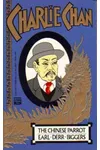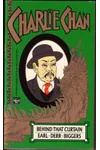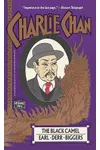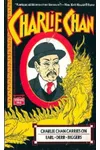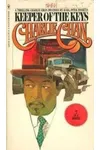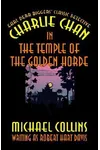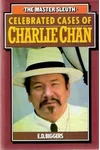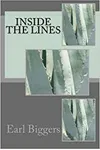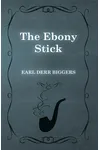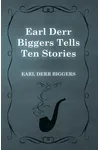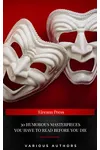Picture an American storyteller who spun tales of mystery and charm, creating a detective who became a cultural icon—meet Earl Derr Biggers! Born in 1884, Biggers crafted the beloved Chinese-American sleuth Charlie Chan, whose wit and wisdom captivated readers and lit up silver screens worldwide. His knack for blending humor, heart, and suspense made him a standout in the Golden Age of mystery fiction.
From his Ohio roots to his Harvard days, Biggers’s journey to literary fame was as intriguing as his stories. Let’s dive into the life, works, and lasting legacy of this master of mystery.
The Making of Earl Derr Biggers
Earl Derr Biggers was born on August 26, 1884, in Warren, Ohio, to Robert and Emma Biggers. A Harvard graduate (class of 1907), he dabbled in humor as a member of The Lampoon, showing early signs of his playful wit. After college, Biggers tried journalism, writing for The Plain Dealer and later becoming a drama critic for the Boston Traveller. His sharp reviews got him sacked in 1912, but this setback pushed him toward fiction. Inspired by authors like Rudyard Kipling, Biggers married Eleanor Ladd in 1914, who influenced his writing, and began crafting stories that blended adventure and intrigue.
Earl Derr Biggers’s Unforgettable Stories
Biggers’s first novel, Seven Keys to Baldpate (1913), was a hit, adapted into a Broadway play and multiple films. This comedic mystery showcased his knack for twisty plots and lively characters. However, his true legacy lies in the Charlie Chan series, starting with The House Without a Key (1925). Inspired by real-life Honolulu detective Chang Apana, Chan was a refreshing counter to the era’s “Yellow Peril” stereotypes, portrayed as a wise, dignified Chinese-American sleuth.
The series, including The Chinese Parrot (1926), Behind That Curtain (1928), and The Black Camel (1929), followed Chan solving crimes from Hawaii to San Francisco. Biggers’s style mixed sharp dialogue, vivid settings, and clever puzzles, often serialized in The Saturday Evening Post. His final Chan novel, Keeper of the Keys (1932), cemented Chan’s place in mystery lore. Other works, like Love Insurance (1914) and The Agony Column (1916), highlighted his versatility, blending romance and suspense.
Biggers’s stories stood out for their cultural sensitivity, especially in portraying Chan as a heroic figure. His Hawaii settings, rich with post-monarchy charm, added exotic allure, while his humor kept readers hooked. Though some modern critics debate Chan’s portrayal, Biggers’s intent to challenge stereotypes was groundbreaking for his time.
Why Earl Derr Biggers Matters
Biggers’s impact on the mystery genre is undeniable. Charlie Chan became a global phenomenon, inspiring over 40 films, radio shows, and even board games. His positive depiction of a Chinese-American hero paved the way for more diverse characters in detective fiction. Biggers’s work also captured a transitional Hawaii, preserving its cultural tapestry for posterity. Despite his death from a heart attack in 1933 at age 48, his stories remain timeless, with Chan enduring as a symbol of cleverness and humanity.
His influence extends beyond books—Hollywood and Chinese filmmakers embraced Chan, and fans still cherish the novels for their wit and warmth. Biggers’s ability to craft engaging, inclusive stories in an era of prejudice marks him as a pioneer.
- Born: August 26, 1884, Warren, Ohio
- Key Works: Seven Keys to Baldpate, The House Without a Key, The Chinese Parrot, Keeper of the Keys
- Died: April 5, 1933, Pasadena, California
- Notable Fact: Charlie Chan was inspired by Honolulu detective Chang Apana.
Snag The House Without a Key and dive into Earl Derr Biggers’s delightful world of mystery and charm!

